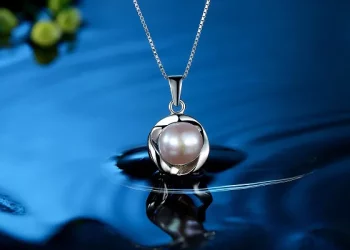Introduction to Agate Tumbling:
Agate tumbling is a fascinating hobby that transforms rough, unpolished stones into beautifully smooth and shiny gems. This process, popular among both amateur rock hounds and experienced lapidaries, involves placing agates into a rock tumbler along with grit and water. Over time, the abrasive action of the grit wears down the rough edges and polishes the surface of the stones. The appeal of agate tumbling lies in the anticipation and satisfaction of revealing the hidden beauty within these natural stones, creating stunning pieces suitable for jewelry, display, or collection.
Understanding Grits:
Grit is an essential component in the rock tumbling process. It acts as an abrasive material that gradually wears down the surface of the stones, smoothing and polishing them. Grit comes in different sizes and types, each serving a specific purpose in the tumbling process. The size of the grit is measured in mesh, with lower numbers indicating coarser grit and higher numbers indicating finer grit. The tumbling process typically involves multiple stages, each using progressively finer grit to achieve a smooth and polished finish.
Types of Grit:
There are primarily two types of grit used in rock tumbling: silicon carbide and aluminum oxide. Each has its own advantages and is chosen based on the specific needs of the tumbling process.
Silicon Carbide: This is the most common type of grit used in rock tumbling. Silicon carbide is very hard and sharp, making it highly effective at grinding down rocks quickly. It is also relatively inexpensive and widely available in various grit sizes, making it a popular choice for the initial stages of tumbling.
Aluminum Oxide: Aluminum oxide is a bit softer compared to silicon carbide but still effective. It is often used in the final polishing stages of tumbling because it produces a finer finish. Aluminum oxide grit is more expensive than silicon carbide but is valued for its superior polishing capabilities.
Grit Sequence:
The tumbling process for agates typically involves four stages, each using a different grit size. The sequence generally follows:
Coarse Grit (60/90 or 80): The first stage uses a coarse grit to shape the stones and remove rough edges. This stage is crucial for preparing the stones for the finer grits to come.
Medium Grit (120/220): The second stage involves medium grit to further smooth the surface of the stones and remove scratches left by the coarse grit.
Fine Grit (500 or 600): In the third stage, fine grit is used to refine the surface, making it even smoother and preparing it for the final polish.
Polish (Cerium Oxide, Tin Oxide, or Aluminum Oxide): The final stage uses a polishing compound to achieve a high-gloss finish on the stones.
Best Grit for Agates:
Agates are relatively hard stones, typically measuring 6.5 to 7 on the Mohs hardness scale. This hardness requires the use of appropriate grits to achieve the best results. For agates, the following grits are recommended:
Coarse Grit: Use 60/90 silicon carbide for the initial shaping stage. This grit is effective at quickly removing rough edges and achieving the desired shape.
Medium Grit: Use 120/220 silicon carbide to smooth the stones further and eliminate scratches from the coarse grit stage.
Fine Grit: Use 500 or 600 silicon carbide to refine the surface, ensuring it is smooth and ready for polishing.
Polishing Compound: For the final polish, use cerium oxide, tin oxide, or aluminum oxide. These compounds are effective at producing a brilliant shine on agates.
Tumbling Process:
The tumbling process for agates involves several stages, each requiring specific grits and careful attention to detail. Here is a step-by-step guide:
Preparation: Select rough agates and ensure they are clean. Load them into the tumbler barrel, filling it to about two-thirds full.
Coarse Grit Stage: Add 60/90 grit silicon carbide and water to the barrel. Seal the barrel and run the tumbler for 7-10 days. Check periodically to ensure the stones are being shaped appropriately.
Rinse and Inspect: After the coarse stage, thoroughly rinse the stones and the barrel to remove any grit residue.
Medium Grit Stage: Add 120/220 grit silicon carbide and water. Run the tumbler for another 7-10 days. This stage further smooths the stones.
Rinse and Inspect: Rinse the stones and barrel again to remove all traces of the medium grit.
Fine Grit Stage: Add 500 or 600 grit silicon carbide and water. Tumble for 7-10 days to achieve a very smooth surface.
Rinse and Inspect: Clean the stones and barrel meticulously to prepare for the polishing stage.
Polishing Stage: Add the chosen polishing compound (cerium oxide, tin oxide, or aluminum oxide) and water. Run the tumbler for 7-10 days, periodically checking for the desired shine.
Final Rinse: Rinse the stones thoroughly and inspect the final polish.
Troubleshooting Common Issues:
Common issues can arise during the tumbling process, but many can be resolved with careful attention and adjustments:
Inadequate Smoothing: If stones are not smoothing adequately, ensure the correct amount of grit is used and that the tumbler is running for the appropriate duration.
Scratches and Pits: These can result from insufficient cleaning between stages. Rinse stones and the barrel thoroughly to prevent cross-contamination of grit.
Poor Polish: If the final polish is unsatisfactory, ensure the stones are free from all previous grit and that the correct polishing compound is used.
Safety Precautions:
Safety is paramount when handling grit and operating tumbling machinery. Here are some essential safety tips:
Wear Protective Gear: Use gloves and safety goggles when handling grit and cleaning the tumbler to protect your skin and eyes.
Adequate Ventilation: Ensure your workspace is well-ventilated to avoid inhaling any dust or fumes.
Machine Maintenance: Regularly check the tumbler for any wear and tear, and ensure all components are functioning correctly.
Safe Storage: Store grit and polishing compounds in labeled, airtight containers to prevent contamination and accidental spills.
Finishing and Polishing:
After the initial tumbling stages, achieving the perfect shine involves a few additional steps:
Final Polish: Ensure stones are completely clean before adding the polishing compound. Use the correct amount of compound and follow the recommended tumbling duration.
Burnishing: After polishing, some hobbyists use a burnishing step with a soap solution to enhance the shine. Place the polished stones in the tumbler with a small amount of water and mild detergent, running it for a few hours.
Maintenance and Storage:
Proper maintenance and storage of grit and tumbling equipment are essential for successful and safe tumbling:
Clean Equipment: Thoroughly clean the tumbler barrel, lid, and any tools after each stage to prevent cross-contamination of grits.
Inspect Regularly: Regularly inspect the tumbler for wear and replace any worn parts promptly.
Store Properly: Store grits and polishing compounds in labeled, airtight containers in a dry place. Keep tumbling equipment in a clean, dry environment to prevent rust and damage.
In conclusion, selecting the right grit and following a systematic process are crucial for successfully tumbling agates. By understanding the different types of grit, following the recommended sequence, and maintaining your equipment, you can achieve beautifully polished agates that showcase their natural beauty. With patience and attention to detail, agate tumbling can be a rewarding and enjoyable hobby.
Related Topics:





























